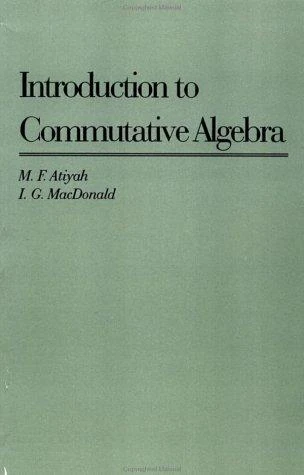
Addison-Wesley Series in Mathematics, 1969
"Commutative algebra is essentially the study of commutative rings. Roughly speaking, it has developed from two sources: (1) algebraic geometry and (2) algebraic number theory. In (1) the prototype of the rings studied is the ring of polynomials in several variables over a field k; in (2) it is the ring of rational integers. Of these two the algebro-geometric case is the more far-reaching and, in its modern development by Grothendieck, it embraces much of algebraic number theory. Commutative algebra is now one of the foundation stones of this new algebraic geometry. It provides the complete local tools for the subject in much the same way as differential analysis provides the tools for differential geometry."
Chapter 1 : Rings and Ideals
Rings and Ring Homomorphisms
Ideals. Quotient Rings.
Zero-divisors. Nilpotent Elements. Units.
Prime ideals and maximal ideals.
Nilradical and Jacobson Radical
Operations on ideals
- Proposition 1.10: The notation denotes the product operation of the ring, not a direct product of rings.
Extension and contraction
In general,
- Proposition 1.17: Note that f is not necessarily surjective.
![{\displaystyle k[x_{1},\ldots x_{n}]}](https://services.fandom.com/mathoid-facade/v1/media/math/render/svg/b784f603dfcbb75848ae852a3bf8a5396c6ced88)


